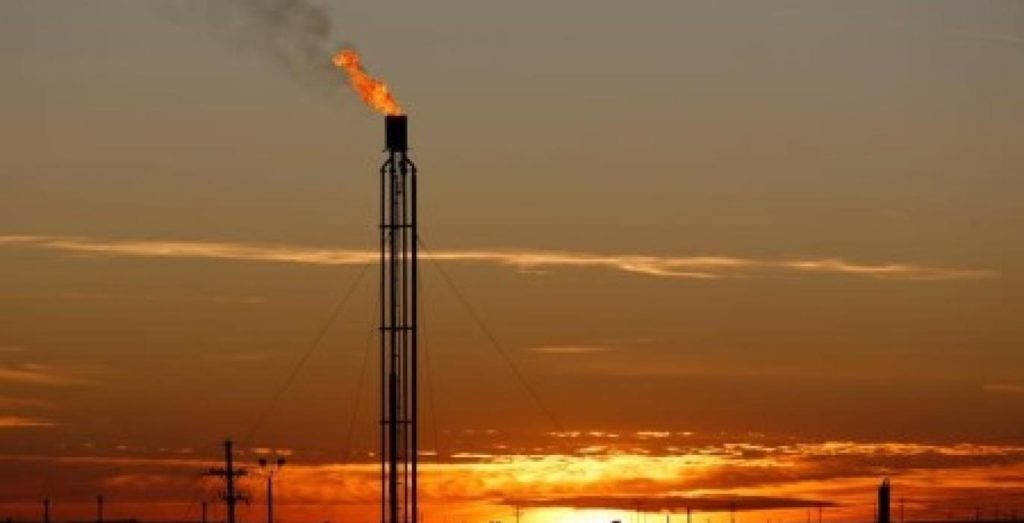U.S. natural gas futures jumped about 4% to a near one-week high on Wednesday, on forecasts for stronger U.S. gas demand this week than previously expected and renewed worries about a possible U.S. rail strike.

A rail strike could boost demand for gas by threatening coal supplies to power plants.
Coal fuels about 20% of U.S. power generation. About two-thirds of the nation’s coal-fired power plants receive their coal by rail. When coal or any other fuel is not available for power generation, energy firms usually burn more gas to produce power. Gas already provides about 37% of U.S. electricity.
“Considering the magnitude of the national uproar that occurred last week when U.S. utilities, multitudes of businesses, and American households thought they were on the cusp of dealing with a logistical delivery nightmare… the railroad workers’ unions now know that they are in a position of significant leverage,” analysts at energy consulting firm Gelber & Associates said.
Gas prices rose despite expectations gas demand would decline next month when the Cove Point liquefied natural gas (LNG) plant in Maryland shuts for a couple weeks of maintenance in October.
U.S. gas use has already been reduced for months by the ongoing outage at the Freeport LNG export plant in Texas which has left more gas in the United States for utilities to inject into stockpiles for next winter.
Freeport, the second-biggest U.S. LNG export plant, was consuming about 2 billion cubic feet per day (bcfd) of gas before it shut on June 8. Freeport LNG expects the facility to return to at least partial service in early to mid-November.
In Puerto Rico, meanwhile, LUMA Energy was slowly restoring electric service after Hurricane Fiona caused an island-wide power outage on Sunday.
Front-month gas futures rose 28.9 cents, or 3.7%, to $8.006 per million British thermal units (mmBtu) at 8:35 a.m. EDT (1235 GMT), putting the contract on track for its highest close since Sept. 15. On Tuesday, the contract closed at its lowest since Aug. 8 for a third day in a row.
Despite recent declines, gas futures were still up about 116% so far this year as higher prices in Europe and Asia keep demand for U.S. LNG exports strong. Global gas prices have soared due to supply disruptions and sanctions linked to Russia’s Feb. 24 invasion of Ukraine.
Gas was trading around $59 per mmBtu in Europe and $43 in Asia. That was a 4% increase in European prices.
Russian gas exports via the three main lines into Germany – Nord Stream 1 (Russia-Germany), Yamal (Russia-Belarus-Poland-Germany) and the Russia-Ukraine-Slovakia-Czech Republic-Germany route – have averaged just 1.3 bcfd so far in September, down from 2.5 bcfd in August and 10.8 bcfd in September 2021.
TOP PRODUCER
U.S. gas futures lag far behind global prices because the United States is the world’s top producer with all the fuel it needs for domestic use, while capacity constraints and the Freeport outage prevent the country from exporting more LNG.
Data provider Refinitiv said average gas output in the U.S. Lower 48 states rose to 98.8 bcfd so far in September from a record 98.0 bcfd in August.
With the coming of cooler autumn weather, Refinitiv projected average U.S. gas demand, including exports, would slip from 92.3 bcfd this week to 89.8 bcfd next week. The forecast for this week was higher than Refinitiv’s outlook on Tuesday, while its forecast for next week was lower.
The average amount of gas flowing to U.S. LNG export plants rose to 11.3 bcfd so far in September from 11.0 bcfd in August. That compares with a monthly record of 12.9 bcfd in March. The seven big U.S. export plants can turn about 13.8 bcfd of gas into LNG.



